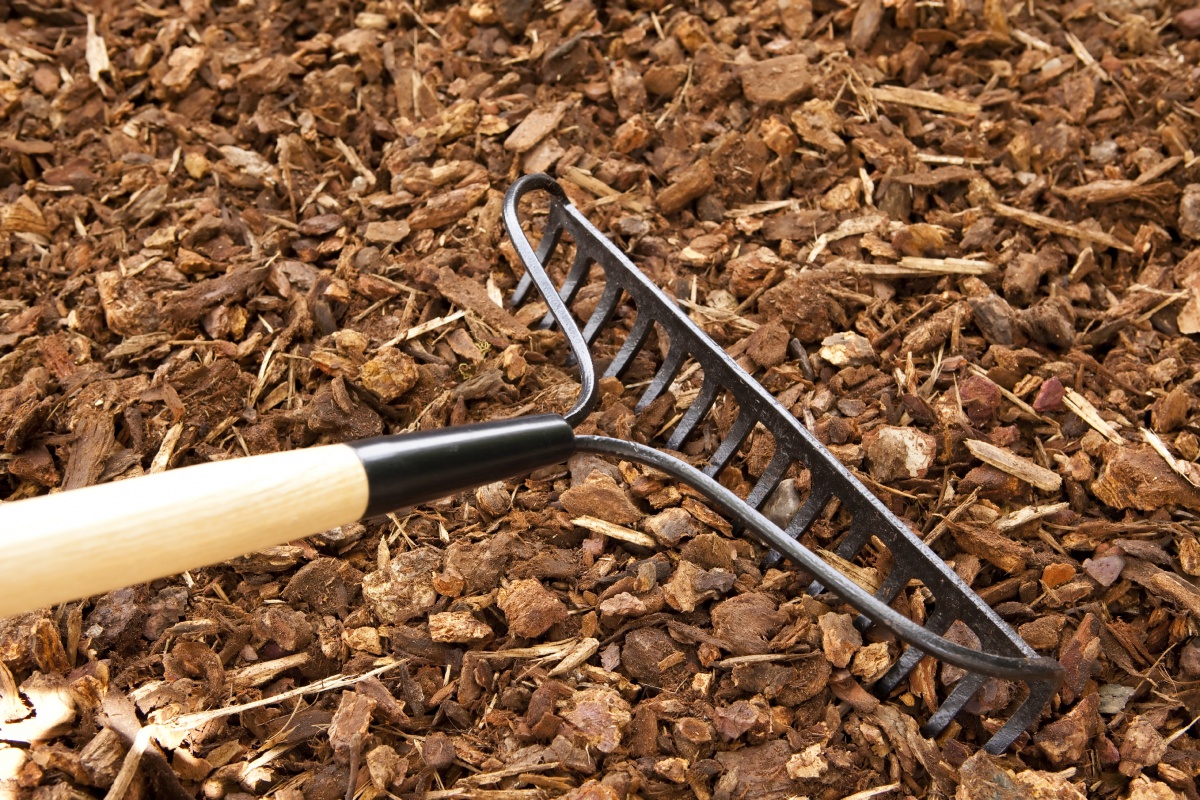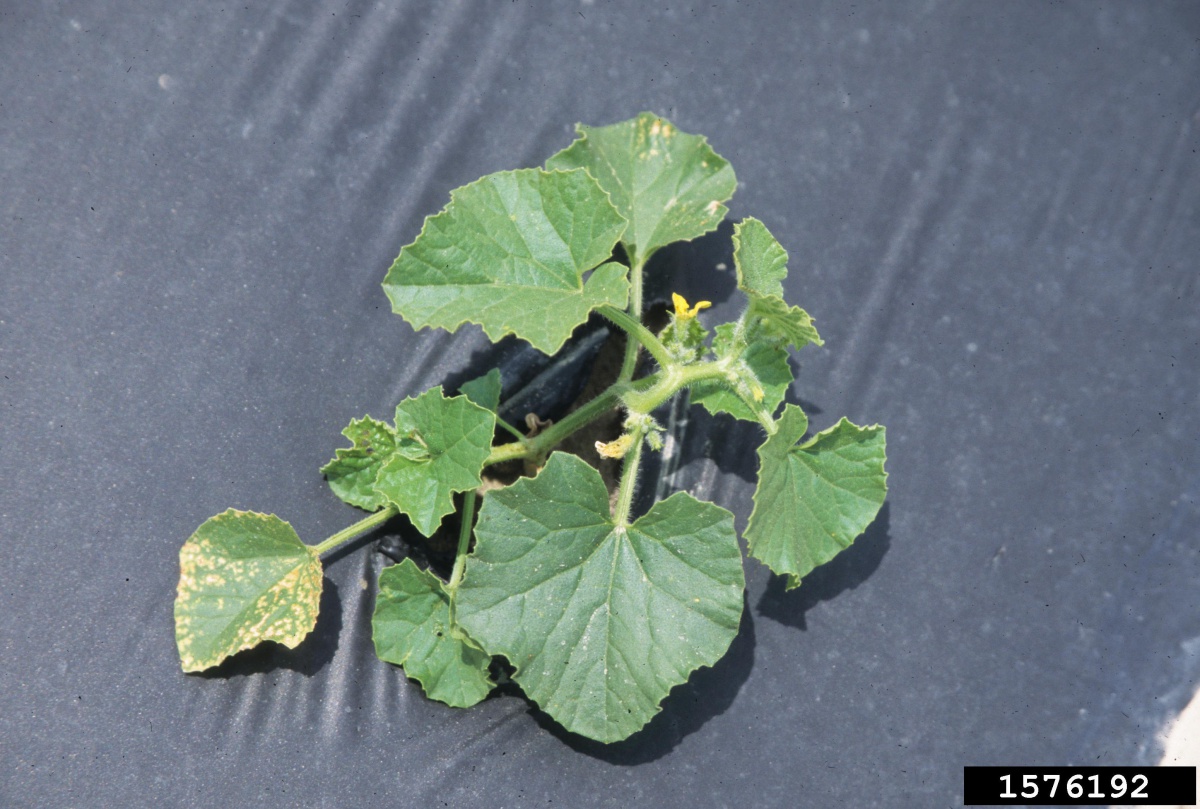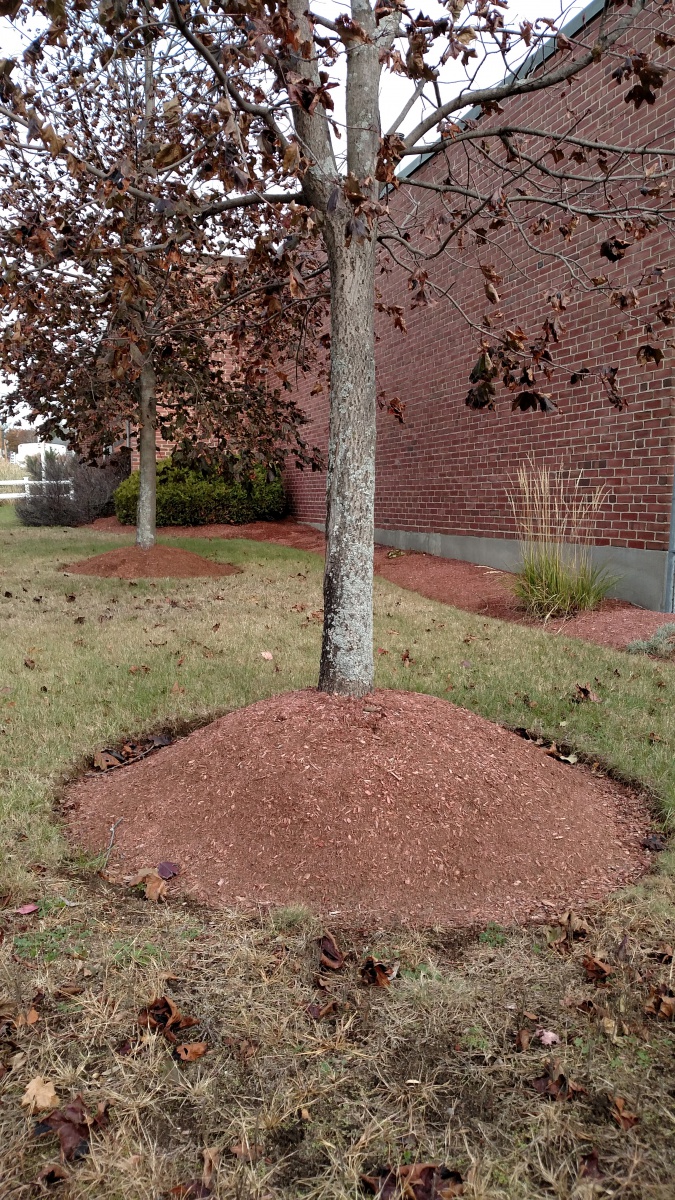Introduction
A garden mulch is any material spread on the soil surface to modify the environment where the plant is growing. The materials used can be natural or synthetic and can be used in any number of combinations within a single garden or around a homestead. The proper selection and use of a mulch will result in increased growth and yields. Mulches used improperly can have the opposite effects.
Benefits of Mulching
- Reduces soil evaporative water losses.
- Increases soil temperature.
- Controls or suppresses weeds.
- Reduces nutrient leaching during heavy rainfall.
- Maintains soil tilth - keeps soil open and loose for water and air penetration.
- May add nutrients to soil (organic mulches).
- Keeps fruit clean during heavy rainfall.
Mulching Materials
Natural (Organic)
Shredded Hardwood Mulch - Extra nitrogen needed. Good at suppressing weeds and does not wash away easily. Decomposes relatively slowly, and is very attractive. Available as single ground, which has a coarser texture, or as double ground, which has a finer texture. Apply 2-3 inches thick.
Pine Bark Mulch – Extra nitrogen needed. Dark-colored and very attractive. Can be purchased as a finely ground mulch, or as larger particles called nuggets, which may float away in heavy rains. Apply 2-3 inches thick.
Grass Clippings - Extra nitrogen needed. Apply after drying for 2-3 days. Clippings may mat, especially on slight slopes where water will easily run off the mat. Apply 2-3 inches thick.
Leaves - Extra nitrogen needed. Dry leaves will blow and wet leaves will compact. Either chop the leaves before using or mix with other materials at application. Apply 3-4 inches thick.
Pine Needles - Extra nitrogen needed. A very easy material to apply and will not compact. Apply 3-4 inches thick.
Sawdust - Extra nitrogen needed. Aged sawdust is best to prevent nitrogen deficiency. Apply 2-3 inches thick.
Leguminous Hay (Clover and Alfalfa) - Adds nitrogen. Can contain lots of weed seeds. Apply 6-8 inches thick.
Grass Hay (Timothy, Ryegrass, Orchardgrass) and Straw - Extra nitrogen fertilizer needed for decomposition. Can be a fire hazard. Apply 6-8 inches thick.
Compost - Excellent source of nutrients. Could contain weed seeds and might have an objectionable odor if decomposition is not complete. Apply 2-3 inches thick.
Paper - After plants have begun to grow, lay down several thicknesses of newspapers, and weight down with rocks, boards or thin layers of other organic materials. Watering the paper thoroughly at the time of application will help to hold it down. Several companies manufacture recycled paper into mulch, sold in rolls, and installed much like black plastic.
Pebbles, Stone Chips, Gravel, etc. - Can be used in some areas, but not convenient where cultivation is necessary.
All natural mulches should be applied after the crop has begun to grow and after the soil has warmed; do not allow mulch materials to contact plant stems, as this increases the risk of disease. The soil should also be weed-free and moist.

Synthetic
Black Plastic - Excellent for conserving moisture and nutrients, warming the soil, and providing weed control. It is difficult to apply under windy conditions. Since it will not decompose in the soil, it must be removed after each crop. Removal is easiest right after the crop is finished. In selected locations, and when handled carefully, it can be used more than one year. The most convenient size to use is 1½ mm thick (0.015 inches) and 3 to 4 feet wide. Crops responding best to black plastic are vine crops (cucumbers, melons and squash), tomatoes, peppers, and eggplant. Before planting (seeds or transplants), lay the plastic tightly and evenly over moist, fertilized soil, securely burying the ends and edges. Cut slits or holes through the plastic to plant seeds or transplants.

Clear Plastic - Not recommended because light passes through, permitting weeds to grow. However, it can be used for early and rapid soil warming if the clear plastic is later covered with organic materials to block the light.
Landscape Cloth or Woven Ground Cloth - Materials woven of fabric, plastic, or paper are available in various lengths and widths. The materials are treated to resist decomposition. Woven materials allow water and air to move through them. They work well on most weeds, although some grasses may grow up through the holes in the fabric. Landscape cloth should be pinned down so that weeds cannot lift it up. Better moisture, temperature, and weed control will be obtained by adding several inches of another organic mulching material on top of the landscape cloth.
Where Mulches Should Be Used
Use mulches whenever new plantings are established. Mulching reduces competition from weeds, conserves moisture allowing new roots to develop, and protects plantings from mechanical damage from mowers and string trimmers. Established beds containing trees, shrubs, annuals, and perennials should be mulched as well.
When to Apply Mulch
New plantings should be mulched immediately after planting. Early spring is ideal, as this conserves existing soil moisture during the period when plants are coming out of winter dormancy. Early season application also prevents many weed seeds from germinating or emerging through the mulch if mulch is applied at recommended depths for the particular material selected.
How to Apply Mulch
Weed the area well before applying mulch. Then spread mulch over the entire planting area. Keep mulch 2-3 inches away from the base of plants to prevent conditions that encourage diseases or attract rodents. Do not form a "mulch volcano" at the bottom of the plant. This practice provides shelter for voles in particular, which eat bark and can girdle plants entirely, resulting in plant damage or death.
Trees and shrubs should be mulched up to, or just beyond the drip line of the plant canopy. Continue to expand the mulched area as plants grow to meet this recommendation.

